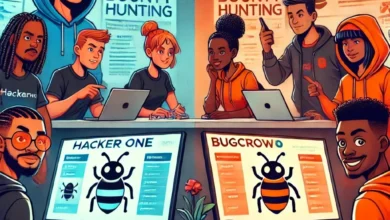Navigating the Minefield of Cross-Site Scripting (XSS) Attacks: A Deep Dive into Web Application's Top Foe
Demystifying the Craft and Consequences of XSS Threats in Modern Web Apps

In the sprawling expanse of today’s digital era, web applications are akin to bustling metropolises, buzzing with innovation, engagement, and commerce. For millennials, web apps aren’t just platforms; they’re intricate parts of their daily lives. From social interactions to managing finances, web applications have deeply intertwined themselves into the millennial’s digital DNA. But as these applications evolve, they simultaneously expose themselves to a range of cybersecurity threats, the most notorious of which is the Cross-Site Scripting (XSS) attack. To truly understand XSS and protect our virtual hubs, it’s vital to delve deeper into its anatomy, types, and prevention.
XSS Unveiled:
Cross-site scripting, colloquially known as XSS, can be thought of as the puppeteer of the digital world, allowing attackers to inject malicious scripts into otherwise benign and trusted web pages. Once the malicious scripts are embedded, they can execute arbitrary code in a user’s browser. Imagine a stranger suddenly taking control of your phone’s browser and accessing your stored passwords or manipulating your view. That’s the horror of XSS.
Diverse Shades of XSS Threats:
- Reflected XSS: Picture a deceptive chameleon mirroring its surroundings. Reflected XSS attacks resemble this mimicry. Cyber attackers craft cunning URLs embedded with malicious scripts. When an unsuspecting millennial clicks on this link, they inadvertently activate the script, causing it to reflect off the server and execute within their browser.
- Stored XSS: Imagine an intruder hiding within the shadows of your home, waiting for the right moment to strike. Stored XSS is similar; the malicious script is permanently stored on the target server. Every visit by a user triggers this lurking danger, leading to potential data breaches.
- DOM-based XSS: In the digital arena, the Document Object Model (DOM) is the backbone of web content. A DOM-based XSS attack is like a termite infestation, weakening this backbone by manipulating its structure, which can result in adverse code execution.
Rippling Consequences of XSS: It’s crucial to understand that XSS isn’t just about code vulnerabilities; its implications ripple out, impacting both technical systems and human trust.
- Data Piracy: Crucial information like credit card numbers, social security details, and passwords can fall into the wrong hands, leading to financial losses or identity theft.
- Session Hijacking: Imagine logging into a secure portal only to have an attacker covertly take over your session. They can then make unauthorized actions, from transferring funds to altering settings.
- Trust Deterioration: Millennials value authenticity and trust. An XSS attack, especially on a favored platform, can significantly damage trust, making users skeptical about returning.
- Propagation of Malicious Content: An infected site can become an unwilling accomplice, distributing malware or harmful content to its visitors.
The Protective Arsenal Against XSS:
- Ensuring Input-Output Sanctity: It’s like teaching a gatekeeper to be discerning about who to let in and in what manner. By rigorously validating incoming data and encoding outputs, harmful scripts can be rendered impotent.
- Adopting Content Security Policy: Implementing a strict CSP acts like a digital firewall, prohibiting any unauthorized scripts from executing.
- Contextual Encoding: Just as we adapt our language based on the situation (whether in a formal meeting or a casual chat), encoding should also be context-specific. It ensures that scripts don’t find any loopholes to sneak through.
- Staying Ahead of the Curve: The digital world evolves rapidly. To stay safe, always ensure that web app tools and software components are up-to-date. Patches should be applied without delay.
- Knowledge is Power: Cultivating awareness is key. Developers must be trained to recognize and prevent XSS vulnerabilities. On the flip side, users, especially millennials who are digital natives, should be educated about the risks of dubious links and the importance of safe browsing.
As we propel further into this digital age, threats like Cross-Site Scripting (XSS) will persist, but they aren’t invincible. By arming ourselves with knowledge and proactive strategies, we can guard our cherished digital territories. Remember, every line of code, every click, and every share matters. Together, let’s navigate this journey towards a secure online experience, making the web a safer haven for all.
Modern Web: The Expanding Playground for XSS
The 21st century, particularly for millennials and Gen Z, is characterized by its rapid digital evolution. From online marketplaces to social media platforms, the world is just a click away. But as the digital realm expands, so does the hunting ground for cyber attackers. Cross-site scripting, or XSS, stands as a sentinel of this dark frontier, continually adapting and finding new vulnerabilities to exploit. So, let’s deep dive into how the modern web has made XSS a growing concern and the evolving tactics to mitigate it.
Why the Modern Web is Vulnerable:
- Increasing Complexity: Modern web applications are becoming increasingly intricate. They rely on multiple frameworks, libraries, and third-party integrations. Each layer brings a potential security gap that attackers can exploit.
- API-Driven Web: The rise of Single Page Applications (SPAs) and mobile apps has seen an increase in API (Application Programming Interface) usage. Poorly designed APIs can be susceptible to XSS attacks, especially if they handle inputs and outputs without due diligence.
- User-generated Content: Websites like social media platforms or forums that allow user-generated content are prime targets. If not filtered or sanitized correctly, malicious scripts can be embedded within innocent-looking posts or comments.
Beyond Traditional Browsers: New Avenues for XSS:
- Mobile Browsers: With smartphones becoming primary browsing devices, mobile browsers are a lucrative target. Mobile browsers, with their unique functionalities and APIs, can exhibit different vulnerabilities than their desktop counterparts.
- Web-based Games: Online gaming has seen an astronomical rise. Games often communicate with servers to save progress, fetch data, or for in-game chats. This communication can be exploited for XSS attacks if not properly safeguarded.
- IoT Devices: Smart devices are the next frontier. From fridges to thermostats, if it’s connected to the web, it’s at risk. While the idea of an XSS attack on a refrigerator might seem odd, imagine a scenario where a smart fridge displays phishing messages or misleading information.
Emerging Defensive Tactics:
- AI and Machine Learning: Advanced algorithms are being developed to predict and detect unusual patterns in web applications. By learning from vast data sets, these algorithms can potentially identify and neutralize threats even before they strike.
- Serverless Architectures: By reducing the server’s role and pushing functions to the cloud, serverless architectures can minimize the areas of attack. With properly configured serverless setups, vulnerabilities can be isolated and dealt with more efficiently.
- Browser Advancements: Browsers are the first line of defense. Modern browsers are now equipped with better security mechanisms like stricter sandboxing, which can effectively contain and mitigate potential XSS threats.
Community and Collaboration:
Open source has taught us the power of community collaboration. Platforms like GitHub or GitLab host countless projects where developers from around the globe contribute. The beauty here is the collective scrutiny. Any vulnerabilities, including potential XSS weak spots, can be quickly spotted and rectified. Moreover, there’s a surge in community-driven platforms that focus on cybersecurity, fostering a culture of shared knowledge and mutual defense.
Conclusion:
As we stride into an era of unprecedented digital reliance, ensuring the security and integrity of our web applications becomes paramount. Cross-Site Scripting, while a formidable foe, isn’t undefeatable. It demands our constant vigilance and adaptability.
For millennials and Gen Z, this isn’t just a technical challenge; it’s a call to action. The internet, in many ways, is their native land. By understanding the threats, staying informed about the latest defensive measures, and fostering a collaborative spirit, these generations can not only protect their digital domains but also shape a safer internet for all.
As the guardians of the next digital epoch, let’s pledge to keep our web strong, united, and free from threats like XSS. In this intertwined matrix of code and content, every user, developer, and stakeholder has a role to play. Together, we can, and we will create a digital realm that’s as secure as it is vast.




